Good Foods Group is on a mission to make good-for-you food better. This means foods without any chemicals, preservatives or artificial colors, flavors and ingredients. It means ingredients that consumers can pronounce. It means developing products in the most quality way possible. And, it does so by utilizing high-pressure processing (HPP) technology.
Good Foods was an early adapter of HPP technology, making it one of the pillars of the business from the beginning.
Fast Facts
Company: Good Foods Group
Plant Location: Pleasant Prairie, Wis.
Total Square Feet: 100,000
No. of Processing Lines: 4
No. of Employees: 1,300 company-wide
Certifications: SQF 8.0, organic-certified, Non-GMO certified, High Pressure Certified, annual audits
“We have utilized the technology from Day 1, which has allowed us to really focus on developing products that are compatible with HPP technology, while giving the consumer what they are looking for—clean labels with simple ingredients, no preservatives, no artificial anything. We call this free from bad,” says Kurt Penn, founder and CEO. “So, as consumers continue to demand clean, fresh and safe foods, Good Foods is committed to HPP as a way to solve that demand.”
That’s why in 2013, Good Foods relocated from Chicago to its current headquarters manufacturing site in Pleasant Prairie, Wis. The then 56,000-square-foot building employed just 50 employees.
Today, Good Foods employs 1,300 people between its 100,000-square-foot Pleasant Prairie plant and another one in Mexico, and has since invested more than $40 million in physical plant and equipment improvements, including doubling production space and adding its sixth HPP system in total. CLICK HERE to learn more about the company.
Here’s how Good Foods, the recipient of Refrigerated & Frozen Foods’ 2020 Refrigerated Foods Processor of the Year, utilizes HPP technology to produce better-for-you foods.
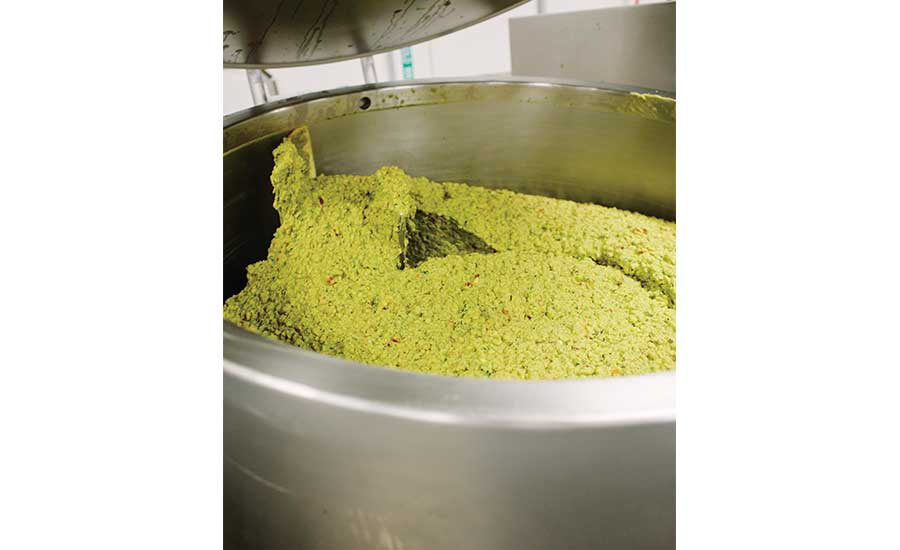
Operators add all of the fresh ingredients into mixers for a designated period of time based on the recipe.
The power of HPP
The overall layout and design of the building can only be described as a box within a box, according to Josh Kosmala, director of operations.
“All of the material handling is situated on the outer ring of that box, and all production happens on the inside box, with everything funneling centrally into our HPP units, which is our critical control point for food safety,” he adds.
The Pleasant Prairie plant produces a wide variety of refrigerated products, including everything from guacamole and avocado mash, plant-based dips and dairy dips to salad dressing, salsa, chicken and other protein salads and cold-pressed juice.
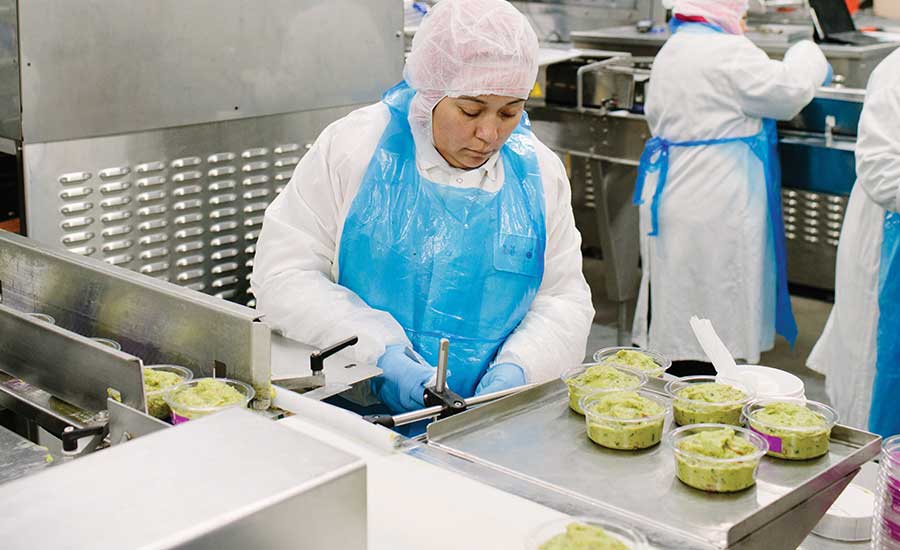
Once the HPP process is complete, product conveys under an air knife to dry off existing water that was introduced during the HPP process. Then, product is lot coded, metal detected and seal checked before being packaged in a sleeve and then case packed.
The labeling area sits on the top floor of the facility, where employees pre-label cups and bottles 24-48 hours in advance of production.
The plant is also home to a series of five coolers, including an allergen cooler, a pulp cooler, a fresh produce cooler, a finished goods cooler and a fifth cooler for overflow of cold fresh juices.
The batching process starts on the mixing machines, where batching sheets come out of the company’s enterprise resource planning (ERP) system and call for a particular ingredient index.
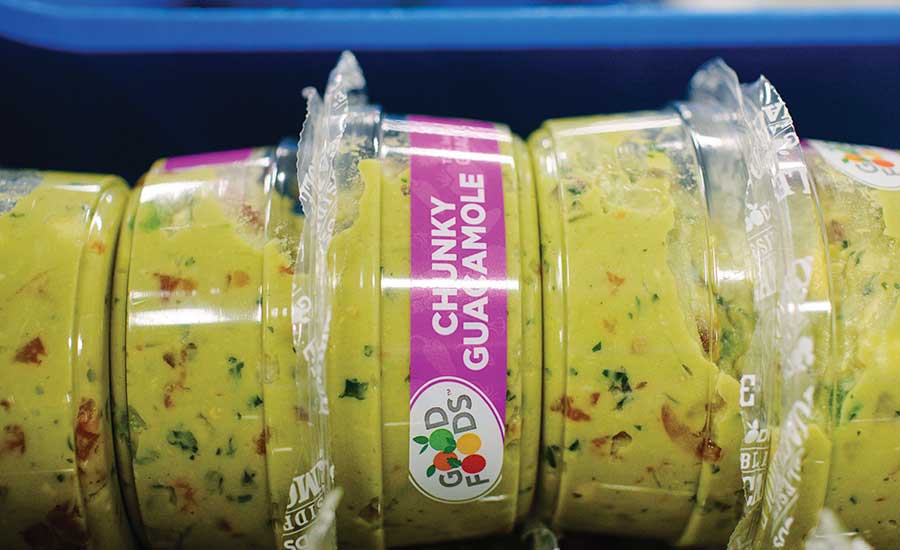
The Pleasant Prairie, Wis., plant is home to four HPP machines.
“[Our operators] account for all of those materials specifically for that batch, for traceability, accountability and quality standards,” says Kosmala. “We then sequentially add all of the ingredients into the mixers for a designated period of time, and when the mixers stop and the timer is done, that product is ready for filling.”
During filling, products have the ability to go to a variety of packaging lines, including deli or single-serve.
At the time of Refrigerated & Frozen Foods’ visit, Good Foods was producing Chunky Guacamole in 7- to 32-ounce deli tubs.
“What differentiates us from the competition is our ability to use fresh ingredients,” says Kosmala. “Our pulp is fresh, our jalapeños are fresh, our cilantro, onions, what we do here is all based around fresh ingredients. So, we’re literally turning over that inventory on a 7-day basis.”
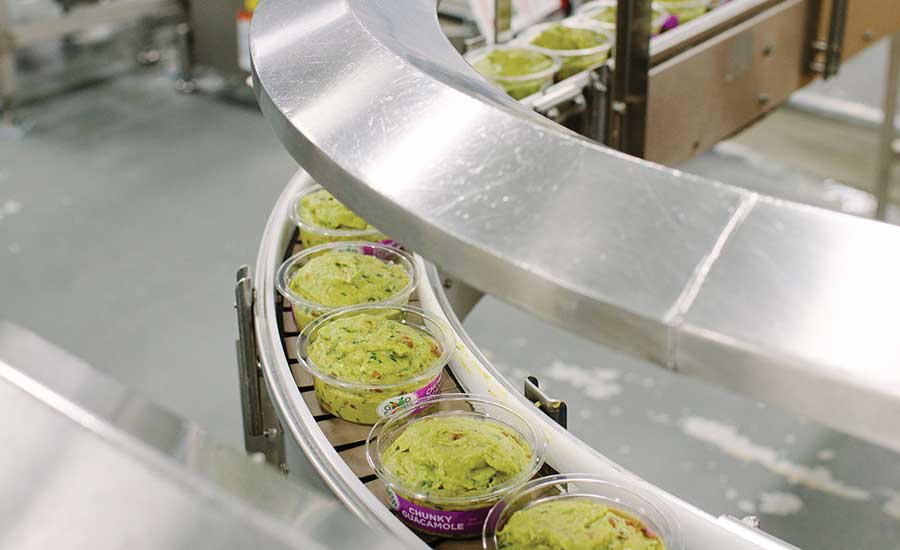
A depositor pumps out product into cups, which then transition down into a high-speed checkweigher before being sealed.
Product fills into the cups, then transitions down into a high-speed checkweigher before being sealed.
“There is a slight injection of nitrogen into our avocado-based products to prevent enzymatic degradation,” adds Kosmala.
Then, operators strategically place the cups inside an HPP vessel, multiple baskets at a time. Good Foods is said to have installed the first high-capacity HPP machine of its kind. Once the cycle is done, the plugs release, the pressure drops and the vessels slide back out of position to be set up for the next baskets.
“We HPP every pound of product that moves out of this facility” says Kosmala. “HPP is a big thing, and I think it’s a testament to Kurt’s visionary leadership because of his ability to recognize what the market trends really are moving toward and get ahead of that. That’s really allowed us to have the successful amount of growth and double-digit figures year over year that we’ve seen. We’re more dynamic than the other HPP companies and tolling companies because we have branded and private label product running through our facility, but at the same time, we do a multitude of product categories, from plant-based dips, cold-pressed juices, dressings, dairy dips, guacamole and avocado mash. It’s all done in-house. And, it also gives us the flexibility and ability to build off categories that show a higher level of success.”
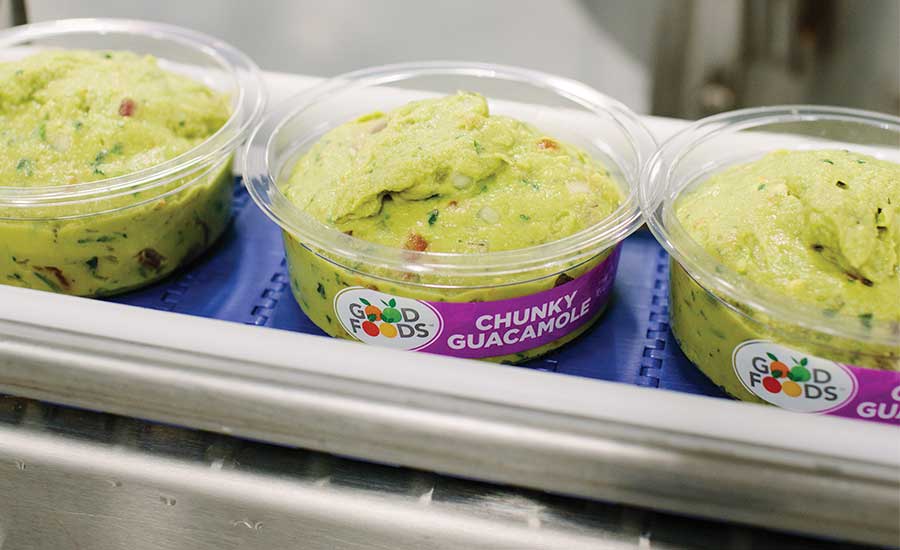
At the time of Refrigerated & Frozen Foods’ visit, Good Foods was producing Chunky Guacamole in 7- to 32-ounce deli tubs.
Once the HPP process is complete and the cycle is done, the vessels discharge on the exit conveyers, where operators then transition that product over to the pack-off belts. Here, product conveys under an air knife to dry off existing water that was introduced during the HPP process. Then, product is lot coded, metal detected and seal checked before being packaged in a sleeve and then case packed.
Meanwhile, “conscious sanitarians,” or food safety specialists, walk around to help facilitate moisture buildup on the floor, remove spillages off the lines and pick up debris out of the production areas to keep the shop floor clean.
Production crews run two full 10-hour shifts with an aggressive third shift sanitation that disassembles clean-in-place and clean-out-of-place equipment every day to ensure all equipment is within the company’s food safety and food quality compliance.
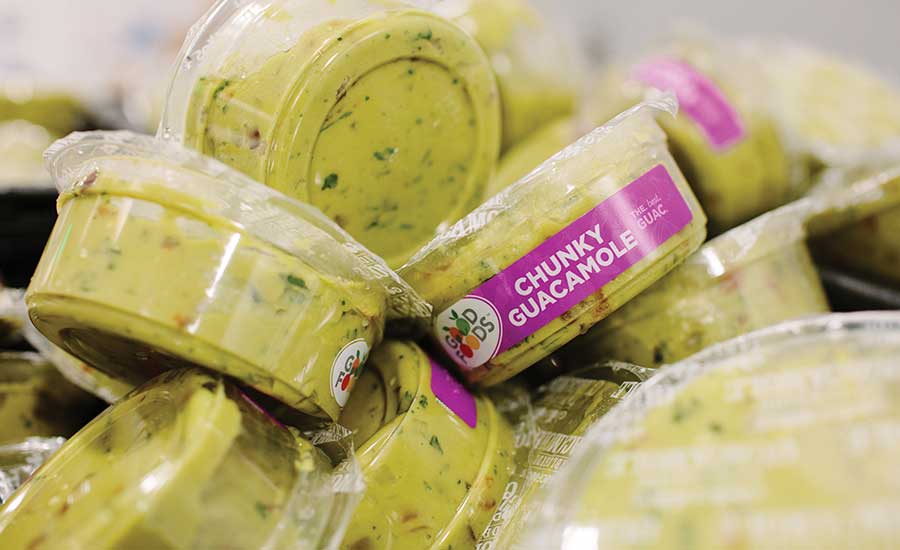
The Pleasant Prairie, Wis., plant produces a wide variety of refrigerated food and beverage products every day across nearly 10 different product categories.
Additionally, the plant runs USDA production five days a week, and is home to on-site support from the USDA for both shifts.
HPP for the future
In addition to producing better-for-you foods, Good Foods implements systems and technologies to operate in a better-for-the-environment way.
For instance, Good Foods invested in air balancing to reduce AC and heating costs and energy usage. It also installed a complete LED lighting system throughout the facility. Future investments entail automation of packing machines.
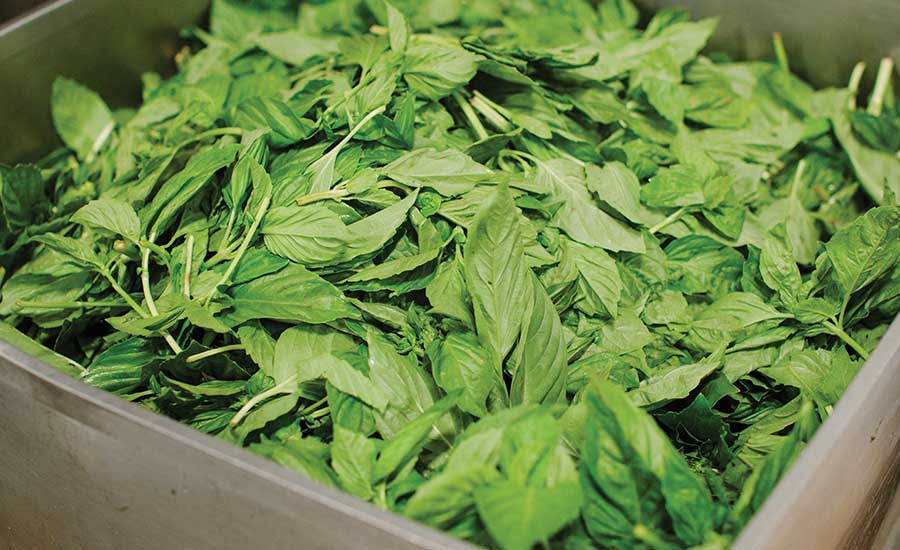
“At Good Foods, flavor is first. We use fresh ingredients, develop recipes with better-for-you substitutions that don’t sacrifice flavor and utilize high-pressure processing technology, so we can deliver flavorful foods that you feel good about eating and feeding your family,” says Kurt Penn, founder and CEO.
“We are leading several sustainability initiatives across multiple functions of our organization, including circular supply chain, Sustainable Packaging Council and how to recycle (H2R) efforts, logistics, operations and energy savings efforts,” says Penn. “Waste stream solutions for circular supply include repurposing our avocado pits and skins for oil production, reusable fresh produce trays, a staff store for employees to purchase products and weekly donations to several local food banks. Good Foods is grounded in continuous improvement, especially in packaging where we are working to increase our post-consumer recycled content to reduce our corrugated and overall plastic consumption and joining the Sustainable Packaging Council, where we are implementing the H2R program to educate end-user consumers on how to prep packaging for industrial scale recycling. We have also completed many energy savings updates to our facility, and are investing in automation. While many other companies and products can check a few of these boxes, Good Foods is able to check them all. This combination is what sets us apart.”
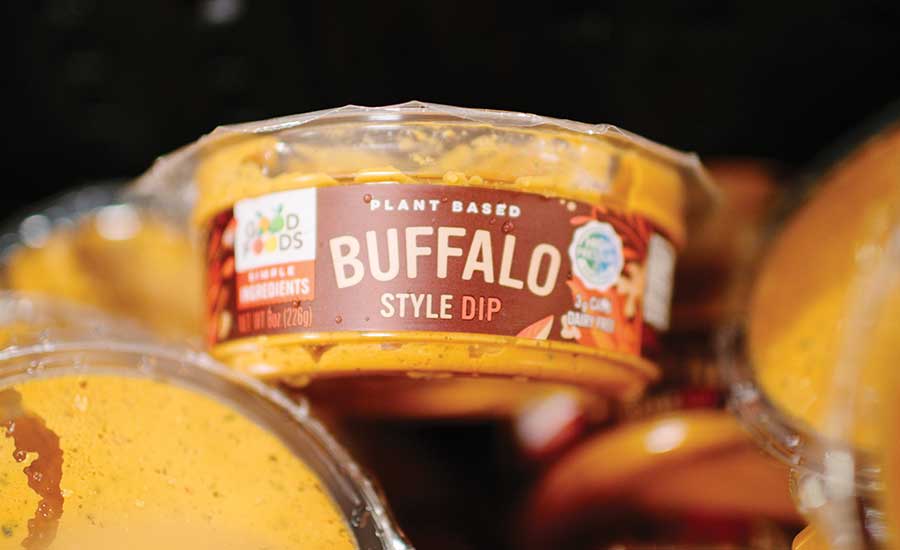
Good Foods produces guacamole and avocado mash, plant-based dips, dairy dips, salad dressing, salsa, chicken and other protein salads and cold-pressed juice in branded and private label forms for over 10,000 foodservice outlets and retail and club stores.




